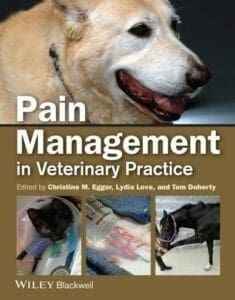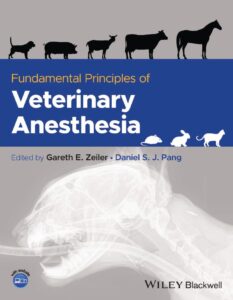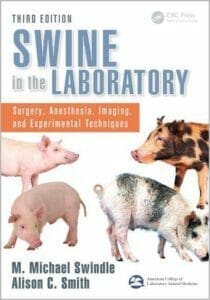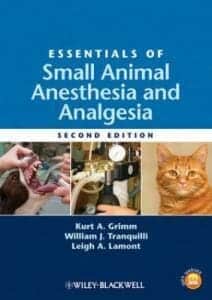
By Gareth E. Zeiler and Daniel S. J. Pang
Fundamental Principles of Veterinary Anesthesia is designed specifically for veterinary students, animal health technicians and veterinarians in general practice. The first edition of Fundamental Principles of Veterinary Anesthesia covers the key principles of veterinary anesthesia, encompassing a wide range of species, including dogs, cats, horses, cattle, and pigs, and establishing links between physiology, pharmacology, and clinical practice in healthy and ill patients.
This text serves as a practical guide for students to prepare themselves for clinical work in a private practice setting, and as a rich, practical resource for those in general practice.
This text is ideally used as a complete curriculum aligned resource, and the companion website is designed to decrease the burden of lecturers who need to compile PowerPoint presentations and review questions.
Features
- Practical approaches to the peri-anesthetic period, from patient assessment, through to preparing for, and successfully completing, an anesthetic event
- Anesthetic drugs available in an academic or private practice, with a focus on commonly used drugs
- Components of the anesthetic machine, gas flow through the machine, how vaporizers work and their functionalities
- Principles and techniques of patient monitoring, with a focus on commonly available devices and their applications
Table of Contents
Section 1: Foundational Knowledge
- Veterinary Anesthesia
- Patient Assessment, Planning, and Preparation
- Pain Physiology, Assessment, and Principles of Treatment
- Principles of Anesthetic Monitoring and Monitoring Equipment
- Inhalation Anesthetic Delivery Apparatus
- Introduction to Pharmacology and Pharmacotherapy
- Injectable Drugs Used for Premedication, Induction, and Maintenance of General Anesthesia
- Inhalational Anesthetic Drugs
- Nonsteroidal Anti-inflammatory Drugs, Local Anesthetic Drugs, and Adjunct Drugs Used for Pain Management
- Other Drugs Used During the Peri-anesthetic Period
Section 2: Fundamental Aspects of Clinical Anesthesia
- Standards of Practice for Performing Veterinary Anesthesia
- Approach to Healthy Dog and Cat Anesthesia and Analgesia, and Selected Disease Processes and Procedures
- Approach to Healthy Horse, Donkey, and Mule Anesthesia and Analgesia
- Anesthesia and Analgesia of Healthy Exotic Companion Mammals, Ruminants, and Pigs
- Approach to Neonatal, Pediatric, and Geriatric Patients
- Approach to a Patient in Shock
- Approach to a Patient with Cardiac Pathology
- Approach to a Patient with Respiratory Pathology
- Approach to a Patient with Renal, Urinary, or Hepatobiliary Disease
- Anesthetic Complications and Cardiopulmonary Resuscitation
Appendices
- Appendix 1: RECOVER CPR Algorithms
- Appendix 2: RECOVER CPR Emergency Drug Dose Charts
- Appendix 3: Checklists
- Appendix 4: Peri-anesthetic Monitoring Sheets
Index

















![Ettinger’s Textbook of Veterinary Internal Medicine 9th Edition [PDF+Videos] Ettinger’s Textbook of Veterinary Internal Medicine 9th Edition [True PDF+Videos]](https://www.vet-ebooks.com/wp-content/uploads/2024/10/ettingers-textbook-of-veterinary-internal-medicine-9th-edition-100x70.jpg)






